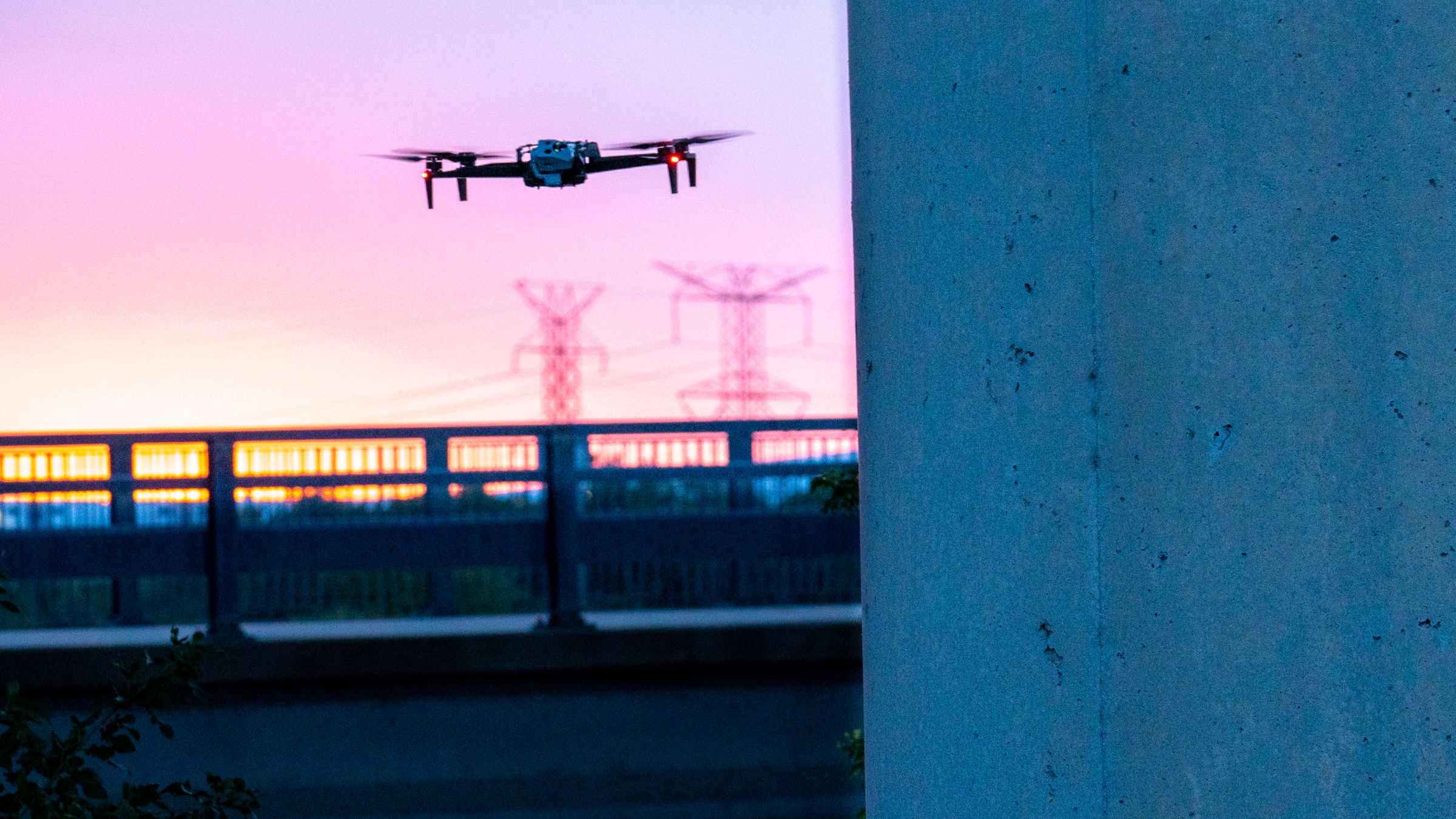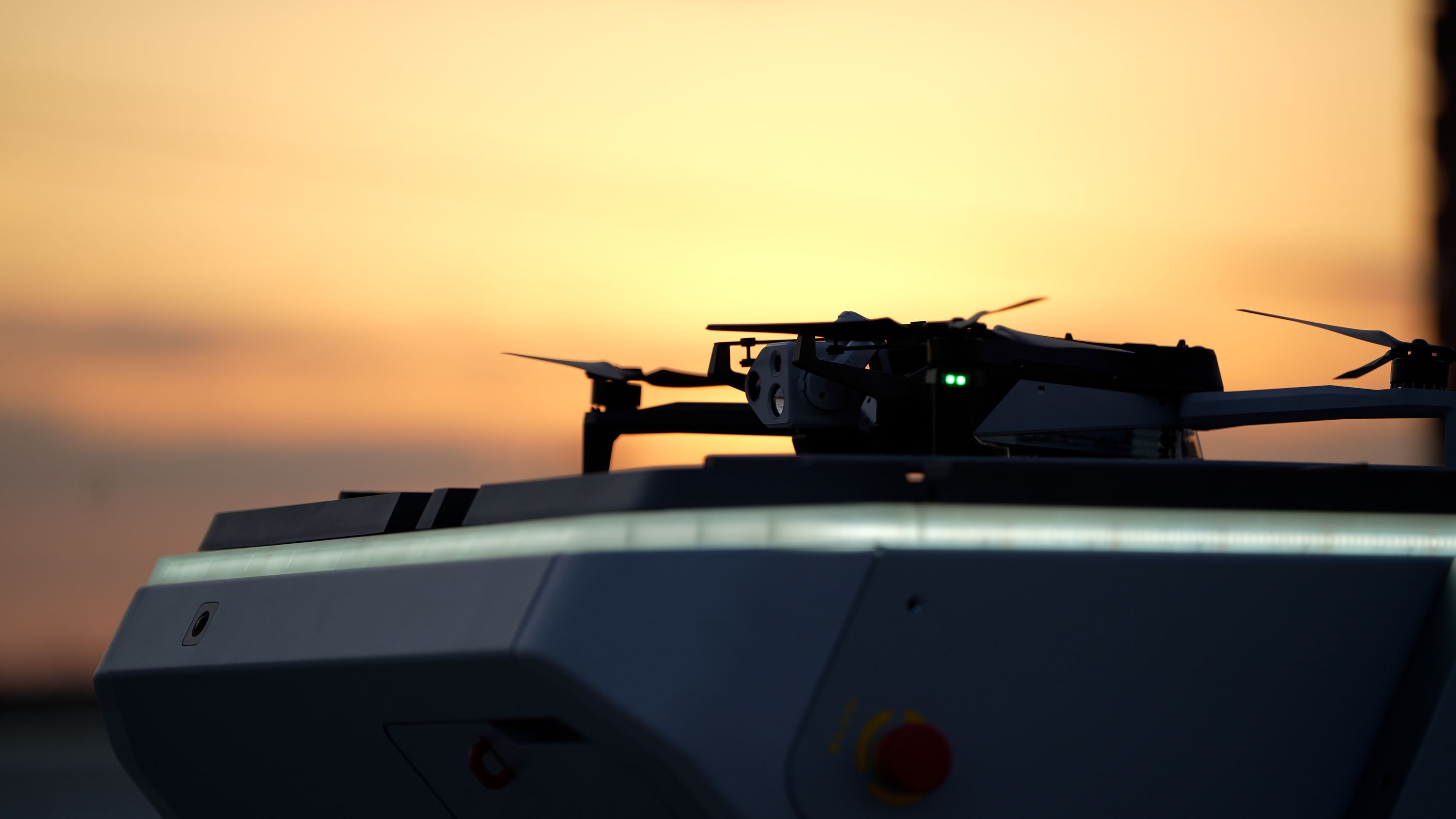Improving safety and reducing risk with aerial robotics in oil and gas

According to POLITICO, a total of 1,665 security incidents involving the U.S. and Canadian power grids occurred in 2023. In the sprawling expanse of the oil and gas industry, securing remote pipeline infrastructure against theft, sabotage, and environmental hazards poses significant logistical and operational challenges. These critical assets, often stretched across harsh and inaccessible terrains, are difficult to monitor and protect using traditional methods. The remoteness not only complicates routine patrols but also delays the response to security incidents, increasing the risk of substantial environmental, financial, and reputational damage.
Discover how advanced AI-enabled drones are transforming remote monitoring in the oil and gas sector, providing advanced pipeline security solutions that enhance operational safety and efficiency.
Securing oil and gas infrastructure health
The geographic spread of pipelines—through deserts, mountains, and vast rural expanses—presents unique challenges. Traditional surveillance methods, such as manned patrols or fixed cameras, struggle with these vast territories due to high operational costs and limited reach. Resource constraints further exacerbate the issue, as deploying sufficient security measures across such expenses is not only costly but often inefficient.
Oil assets and infrastructure emerged as the biggest targets for hackers and cyberattacks since 2017, accounting for a third of all incidents over the period.

In response to these challenges, enter the world of advanced drone technology, which offers a new paradigm in pipeline surveillance and security. Today's drones are capable of autonomous or remote operations enhanced by 5G connectivity, equipped with high-resolution and thermal imaging cameras, and capable of streaming video data in real-time. This technology enables continuous, comprehensive monitoring of oil & gas infrastructure, overcoming the limitations posed by difficult terrains.
“ “For us to be able to get in the situation in just a few minutes and determine what type of hazard this is, if this is something that is going to blow up or something that’s going to poison people, it tells us which direction to take the incident,”
Multiplying security force efficiency
Security forces often arrive on the scene of an incident with little to no information, leaving boots to hurry up and wait for more situational awareness. Implementing automatic deployment of drones once on the scene security teams can cover significantly larger areas than foot patrols. Drones can extend the reach of security and emergency response teams by providing more detailed insights into security threats to remote pipeline sections. Drones also reduce the cost by up to 90% when incidents like spillages do occur that require cleanup efforts.
“ “The pressure was on as drone feed was being live streamed to the State EOC and the Governor’s office. All in all it was a successful mission and our UAS team did a great job!”
The use of drones in response to threats expands the coverage and reach of security teams on the ground through patrol-led drone deployments, achieving enhanced situational awareness on every patrol.
Drones amplify onsite security teams with increased patrols and expanded coverage of a site or facility. Plus, drones give you an aerial perspective and can cover gaps in fixed cameras/sensors with a flying sensor that can be deployed anywhere, at any time. Not only that, the aerial insights provided from streaming aerial video of threats in real-time equips leadership with data they need to make critical decisions in response to security threats or disasters in real-time.
Enhancing decision-making in emergency situations
Furthermore, these flying sensors provide rapid response capabilities that are crucial in emergencies such as suspected leaks or breaches. They allow for immediate situation assessment and action, delivering accurate, timely data that is vital for making informed decisions and effectively managing crises.
Industry leaders utilizing sUAS technology
Shell Oil Company uses drones to monitor their oil fields and refineries. These drones perform regular surveillance to ensure the security of the facilities, monitor for environmental hazards, and quickly respond to any incidents or unauthorized activities.
In another example, Chevron utilized drones to enhance emergency responsiveness around the Richmond Refinery. The drones efficiently mapped oil buildup and tracked oil slicks, demonstrating their capacity to replace human observers in dangerous conditions, thereby optimizing safety and response times.

Implementing drones into oil & gas security
Integrating drones into infrastructure security frameworks can seem daunting, but by focusing on vendors building drone technology solutions that support your operational demand, you can avoid making costly mistakes along the way. Here are key considerations for choosing the right drone technology vendor:
1. AI-driven autonomy:
Opt for drones that offer advanced autonomy capabilities to ensure safe and efficient data capture. Autonomous drones like Skydio X10 can navigate complex environments without constant human intervention, making them ideal for monitoring expansive and inaccessible pipeline areas.
2. Ease of use:
Select drones that are user-friendly, allowing personnel with minimal pilot training to operate them effectively. This accessibility ensures that drones can be deployed quickly and by a broader range of staff, enhancing deployment speed and operational flexibility.
3. Complex mission handling:
Choose drone systems capable of automatically conducting complex site security and inspection missions. This includes pre-programmed patrols, anomaly detection, and adaptive response strategies, all with minimal user input.
4. End-to-end data platform:
Ensure that the drone technology integrates with an end-to-end data platform (https://www.skydio.com/skydio-extend) that optimizes data capture, storage, analysis, and reporting. This integration is crucial for turning raw data into actionable insights facilitating swift decision-making in security and maintenance operations.
5. U.S. supply chain and support:
Prioritize vendors that offer U.S.-based supply chains and local support networks. This not only enhances the security and reliability of the technology by complying with domestic regulatory standards regarding critical infrastructure, it also means dedicated customer success, in-person training, regular feature improvements, and partner integrations based on close collaboration with customers.
6. Drone docks and remote operations:
Invest in drone systems that include drone docking stations and support for remote operations and streaming capabilities over 5G. These features are essential for Beyond Visual Line of Sight (BVLOS) operations, enabling inspection and security drones to be launched, operated, and docked autonomously without direct visual supervision by operators.
7. Regulatory services and support:
Choose vendors that provide comprehensive regulatory support, helping your company navigate complex legal requirements for remote or autonomous drone operations. Vendors with a track record of successful waiver approvals for customers should be prioritized if implementing remote or autonomous drone operations, especially from drone docking stations at remote locations.
The future of infrastructure security
As the oil and gas industry continues to evolve, aerial robotics will become central to remote monitoring technology, offering scalable and efficient pipeline security that was previously impossible with the obvious limitations of fixed cameras/IoT sensors largely in use today.

Positioned in strategic locations, drone docking stations can launch autonomous security drones to patrol based on a schedule for continuous patrols of high risk areas. Patrols can also be scheduled randomly for the purpose of deterring theft or vandalism. The same docks can launch inspection drones to regularly monitor and respond to alerts, offering an integrated aerial sensor platform for continuous monitoring of remote or dangerous locations.
Once implemented, aerial robot sensor platforms like Skydio X10 are helping to safeguard critical infrastructure in remote and often dangerous environments that put security and response teams at risk no matter if they are responding to a leak caused corrosion or gunfire.
The advent of aerial robotics for securing oil & gas infrastructure provides a new level of real-time data-backed decision making that opens the door to greater overall efficiencies before, during, and after security or disaster events even occur.
About Skydio
Skydio is at the forefront of autonomous flight technology, providing cutting-edge solutions that enhance safety, efficiency, and effectiveness across commercial and civil applications. Committed to pioneering advancements in drone technology, Skydio is dedicated to ensuring that critical infrastructures remain protected with the most advanced technology available, today and tomorrow.
By embracing these future possibilities, the oil and gas industry can ensure the security of its assets and adapt swiftly to emerging challenges with the help of cutting-edge technology.






